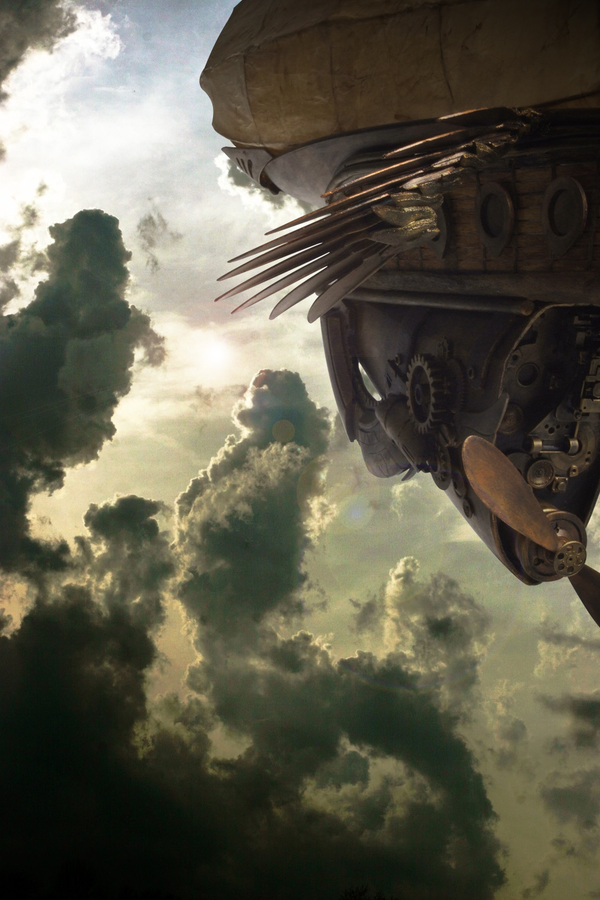By Paul Esau (Sports Editor) – Email
 The ship has sailed, the storm is gathering, and something extraordinary is about to happen at the UFV theatre in Chilliwack. After much preparation and practice, rehearsal and theatrics, director Bruce Kirkley and the Theatre Department would like to present Shakespeare’s The Tempest as the last show of the 2010-11 season. Offering magic, monsters, and even a shipwreck, the play is “such stuff, as dreams are made on,” and promises to be a truly rewarding spectacle even for those generally intimidated by the Immortal Bard.
The ship has sailed, the storm is gathering, and something extraordinary is about to happen at the UFV theatre in Chilliwack. After much preparation and practice, rehearsal and theatrics, director Bruce Kirkley and the Theatre Department would like to present Shakespeare’s The Tempest as the last show of the 2010-11 season. Offering magic, monsters, and even a shipwreck, the play is “such stuff, as dreams are made on,” and promises to be a truly rewarding spectacle even for those generally intimidated by the Immortal Bard.
The Tempest is the story of the brooding mage Prospero, who, marooned on a desert island, bides his time plotting supernatural revenge against his betrayers. Aided by his companions, the spirit-like Ariel and menacing Caliban, he manages to trap his Neapolitan enemies on the island and set the machineries of their demise in motion. Yet all is not as simple as it seems, as new betrayals are plotted and new alliances cemented.
One of the most interesting visual aspects of the play is the clash between the cultures and costumes of the islanders (Prospero, Ariel, Caliban) and those of the Neapolitans. In a very novel interpretation, Director Kirkley and Set Designer Astrid Beugeling have chosen to portray the islanders as Minoan-esque, while the Neapolitans come from a “Steam-punk” civilization. “One of the things that has been intriguing me lately is the whole “Steam-punk” movement,” says Kirkley, “the Sci-Fi movement based on what the world might have looked like had we taken a different direction than the one we did in the early 20th century. It’s a wonderful opportunity… for some amazing Victorian era costumes, but with all these mechanical gears and sprockets and steam.”
Beugeling, who created most of the set, described the island, saying “Minoan culture is very prevalent in the set design. There are a lot of swirls and mazes and really fantastical creatures. Octopuses were really prevalent in a lot of (Minoan) artwork. There are a lot of frescos in Crete from the Minoan culture, and that’s where we chose a lot of our colours. There are a lot of vibrant oranges, blues, turquoise colours.”
Generally the two most bizarre characters in the script are Ariel and Caliban, who provide a sort of “yin and yang” in their relationship to each other and to Prospero. Ariel is portrayed by Catrina Lewis, who describes her character as a “servant to Prospero” who is “fighting for her freedom.” “She really actually loves Prospero,” clarifies Lewis, “she doesn’t like being his slave; she’d like to find freedom; she wants to do what she wants, but she really does love Prospero even though he’s unfair to her sometimes.”
Gabriel Kirkley describes his character Caliban as having a more negative role: “Caliban is Prospero’s slave, but in a different way than Ariel because he has to do `all these menial tasks. He has to fetch wood and he has to wash dishes and do all this stuff that he really doesn’t like doing. The island used to be his; he used to be alone on this island with his mother. Then Prospero shows up.”
The bizarrity of Lewis and Gabe’s costumes alone is worth the price of admission, but the actors have also taken great pains to immerse themselves in their characters. “I took gymnastics after I got the part” Lewis mentioned, hinting that her role requires some significant athleticism.
The Tempest was Shakespeare’s last work, written nearly a decade before he died. “I think it’s probably one of his most beautifully written shows,” mused Gabe. “I think Shakespeare really wanted to go out with a bang because it was his last play… Prospero’s final speech in the play is basically, he’s apologizing for everything he may have done in his career. A lot of people think it’s actually Shakespeare, this is like Shakespeare saying to the audience: ‘Some things were not good, but a lot of it was, and I’m finished now.’”
The 2011 production is actually the second time that Kirkley has directed The Tempest, the first time being in 1996. He remembers, “The last production we did of The Tempest was actually the first Shakespeare production we did in this theatre. It was the inaugural Shakespeare.” In that production the island was heavily influenced by “Egyptian iconography,” while the Neapolitans were coming from the Napoleonic era.
When asked what the audience should take away from the production, Kirkley replied, “I think, for me one of the things for this play is that it’s a play about transformation. About how events and experiences transform people. It’s about the magic of transformation. Prospero is a magician, and what does that mean? What is the foundation of his magic? On one level it is a kind of fantastic magic, the ability to conjure spells and spirits which makes for great visual moments for the theatre. But on another level all of that is kind of metaphoric, because the real magic of the play is how Prospero sets out in the beginning to have revenge on those who had wronged him many years before… but then through the process of driving them mad and driving them to distraction he begins to realize that all he’s doing is perpetuating the same terror, the same wrongs that were visited on him. And really the wiser course of action, as he says in the play, is forgiveness.”
The Tempest will run from March 11-27 at the theatre on the Chilliwack campus, with tickets selling at between $13 and $16. To reserve tickets call 604-795-2814 or email: theatre@ufv.ca.


